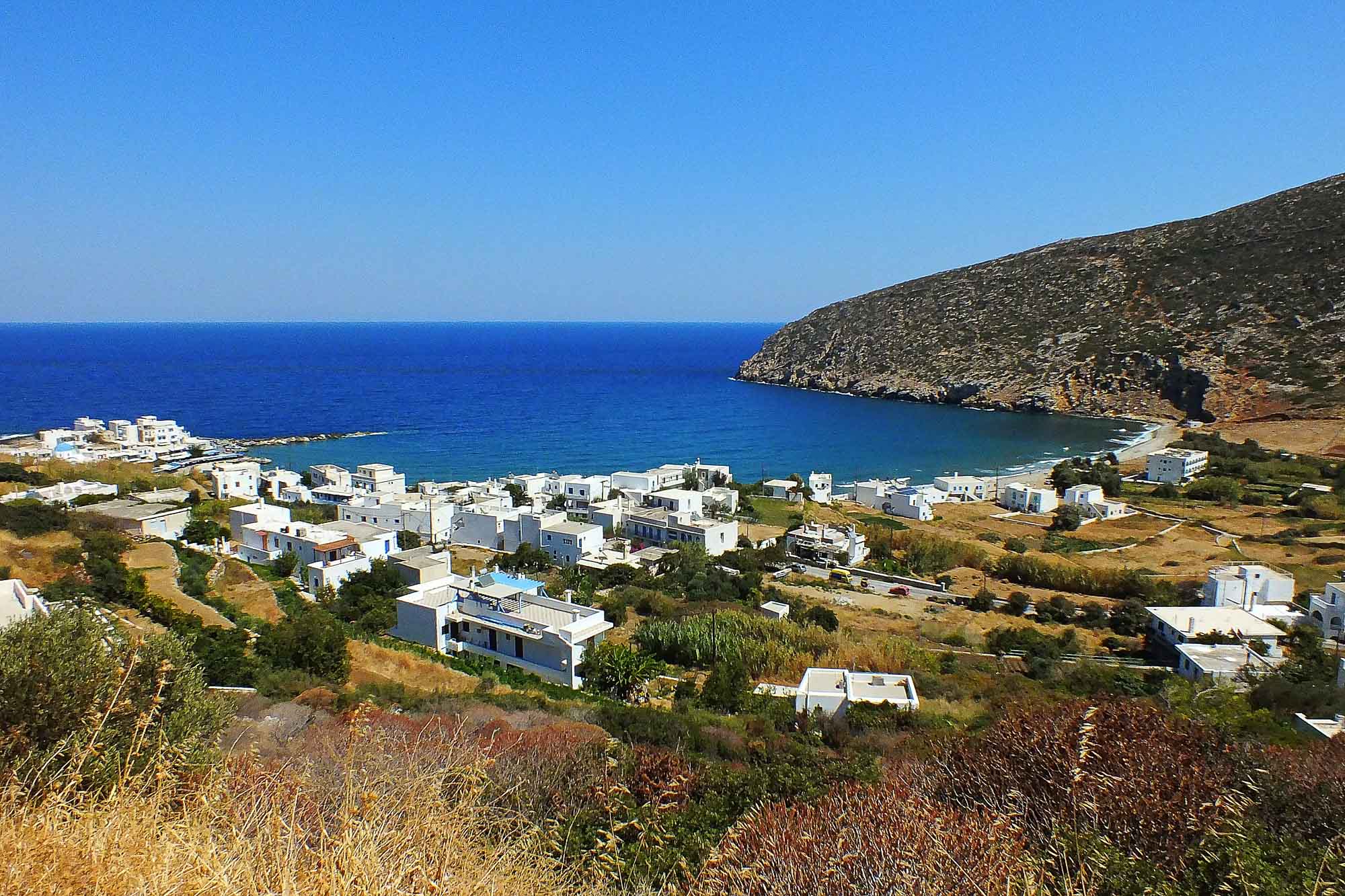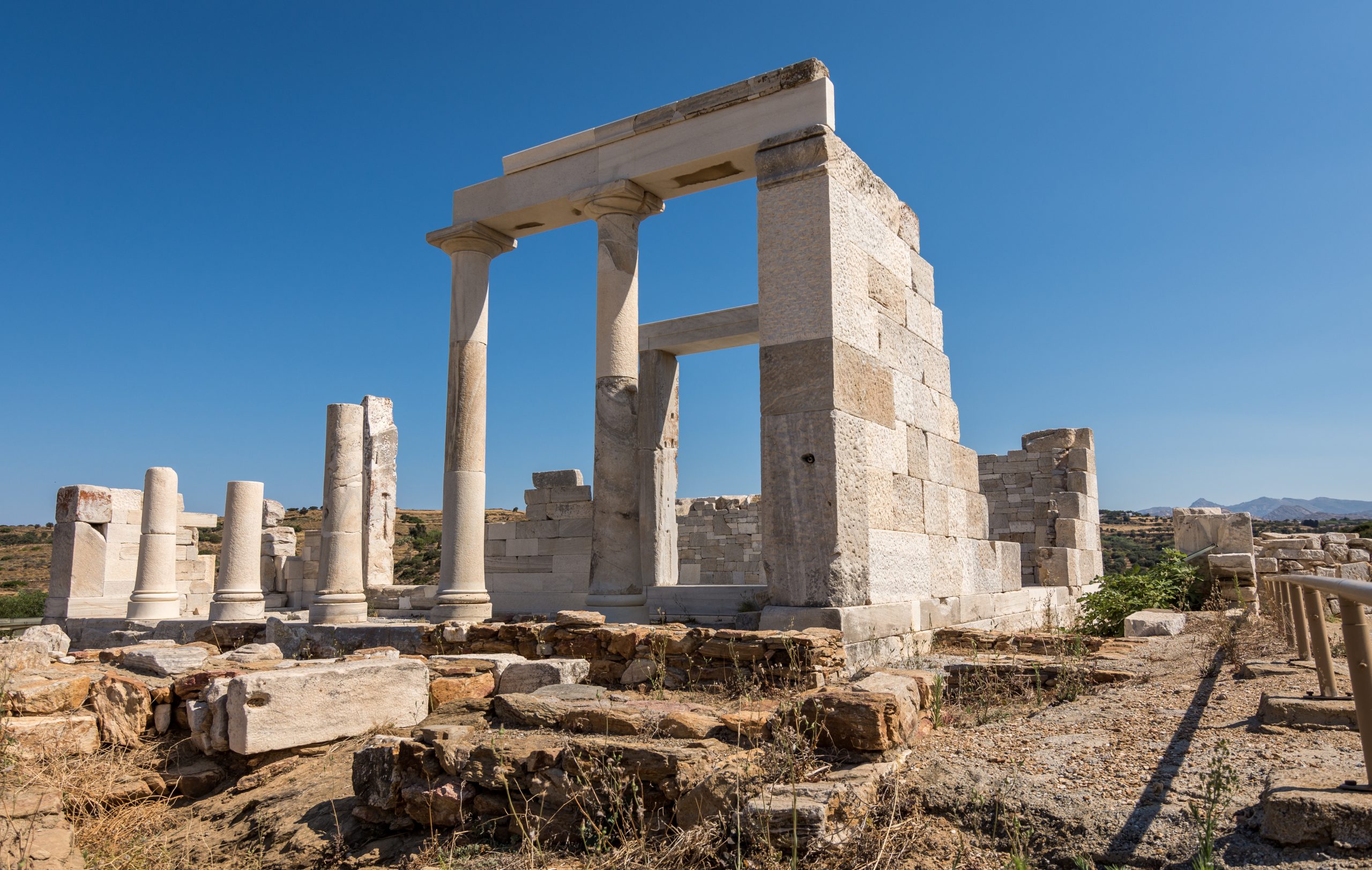Temple of Demeter Naxos: Echoes of ancient reverence in timeless stones
Naxos, the largest of the Cyclades islands, carries within its timeless landscapes a treasure trove of historical wonders. Among these, the Temple of Demeter stands as a testament to the island’s rich past, offering a glimpse into the ancient Greek world and the worship of one of its revered goddesses. In this article, we embark on a journey through the history, significance, and allure of the Temple of Demeter in Naxos.
Rent a car with Mars and discover the Temple of Demeter Naxos
Historical Tapestry:
The Temple of Demeter, situated near the village of Sangri in the heart of Naxos, dates back to the 6th century BCE. Built during the archaic period, this ancient sanctuary pays homage to Demeter, the goddess of agriculture, fertility, and the harvest. The temple’s historical significance lies not only in its architectural prowess but also in its role as a center for religious ceremonies and the celebration of the Eleusinian Mysteries.
Architectural Elegance:
The temple, constructed in the Doric style, stands as an elegant example of ancient Greek architecture. Though partially reconstructed, its remnants reveal the grandeur of the original structure. The rectangular temple features a pronaos (front porch), a naos (cella or main chamber), and an opisthodomos (rear porch). The columns, although weathered by time, exude a quiet strength, showcasing the skill of ancient craftsmen who dedicated their art to the gods.
Cult of Demeter:
The Temple of Demeter played a pivotal role in the religious life of ancient Naxians. Demeter, associated with the cycle of fertility and the changing seasons, held a revered place in the hearts of farmers and those who depended on the bounties of the land. The temple served as a sacred space where worshippers offered prayers and rituals, seeking the goddess’s favor for a prosperous harvest and the well-being of the community.
The Eleusinian Mysteries:
The Temple of Demeter is linked to the Eleusinian Mysteries, an ancient religious tradition that unfolded in the city of Eleusis but held deep roots in Naxos. These mysterious and sacred rituals, dedicated to Demeter and her daughter Persephone, were considered a pathway to the afterlife and a source of spiritual enlightenment. Pilgrims from various corners of the ancient Greek world would make their way to Naxos to partake in these secret ceremonies, reinforcing the island’s status as a religious center.
Sacred Landscape:
Surrounded by a landscape of rolling hills, olive groves, and fields, the Temple of Demeter is nestled in a serene setting that adds to its mystical aura. The tranquil surroundings echo with the whispers of ancient rituals and the footsteps of devotees who once walked these sacred grounds. Visiting the temple allows modern travelers to connect with the spiritual energy that permeates the island, transcending the boundaries of time.
Archaeological Significance:
The archaeological site of the Temple of Demeter has undergone careful excavation and restoration, revealing not only the temple but also other structures that formed part of the sacred complex. The site includes remnants of an ancient stoa (covered walkway), an altar, and the foundations of buildings that likely served as accommodations for pilgrims. These archaeological findings contribute to the broader understanding of religious practices and community life in ancient Naxos.
Cultural Legacy:
The Temple of Demeter, with its enduring presence, continues to be a symbol of cultural heritage and spiritual significance on Naxos. Its influence extends beyond the physical structure, permeating the island’s traditions, festivals, and collective memory. The legacy of Demeter and the Eleusinian Mysteries endures in the cultural fabric of Naxos, a testament to the enduring impact of ancient beliefs on contemporary identity.
Visiting the Temple Today:
For modern-day visitors, the Temple of Demeter offers a unique opportunity to step back in time and explore the remnants of an ancient sanctuary. The archaeological site is accessible to the public, allowing travelers to wander through the temple’s columns, touch the weathered stones, and contemplate the mysteries that unfolded within its sacred walls. The surrounding landscape, with its panoramic views and a sense of timeless tranquility, invites reflection on the intersection of history, spirituality, and the natural beauty that defines Naxos.
The Temple of Demeter in Naxos stands as more than a historical relic; it is a living testament to the enduring connection between the ancient and the contemporary. As visitors walk through its hallowed grounds, they become part of a narrative that spans centuries, from the fervent worship of Demeter to the quiet echoes of spiritual contemplation. The temple’s columns, weathered yet standing tall, carry the weight of history, inviting all who approach to delve into the mysteries of Naxos’ past and glimpse the eternal grace of Greek civilization.





